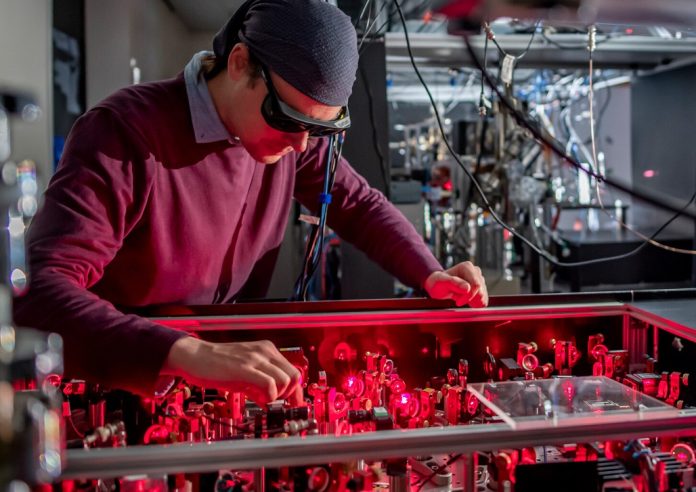
Scientists have developed an innovative 3D printed vacuum system to trap dark matter, a mysterious substance that makes up a large part of the universe.
This exciting development aims to detect domain walls, which could help unravel some of the universe’s biggest mysteries.
The research, conducted by the University of Nottingham’s School of Physics, was published in Physical Review D.
Dark matter and dark energy are two of the most puzzling components of the universe. They make up about 95% of everything, while ordinary matter, the stuff we can see and touch, makes up only about 5%.
Despite knowing their effects, scientists still don’t understand what dark matter and dark energy actually are.
Professor Clare Burrage, one of the study’s lead authors, explains that one way to study dark matter is by introducing a particle called a scalar field.
The theory suggests that light scalar fields can undergo changes that form structures called domain walls. These walls are similar to the fault lines that appear when water freezes into ice.
When water molecules freeze, they line up in a crystal structure, but some molecules end up in different positions, creating fault lines. Similarly, when the density of scalar fields decreases, they form defects or dark walls.
These walls can change the path of particles that pass through them, potentially proving the existence of scalar fields.
To detect these dark walls, the researchers created a special vacuum system using 3D printing. This vacuum reduces the density of gas and allows ultra-cold lithium atoms to be added.
In this new experiment, the vacuum system will mimic the transition from a dense to a less dense environment. The lithium atoms will be cooled to -273°C, near absolute zero, using laser photons. At this extremely low temperature, the atoms exhibit quantum properties, making them easier to analyze.
Lucia Hackermueller, an Associate Professor who led the design of the experiment, explains that the 3D printed vacuum chambers were created based on theoretical calculations of dark walls. The shape, structure, and texture of these chambers are designed to trap dark matter effectively.
In the experiment, a cloud of cold atoms will pass through the vacuum system. If the dark walls are present, they will deflect the cloud. Cooling the atoms with laser photons reduces their energy, similar to slowing down an elephant with snowballs, making them move more slowly and predictably.
The team spent three years building this system and expects to have results within a year. Whether they prove the existence of dark walls or not, this experiment will be a significant step forward in understanding dark energy and dark matter.
It also demonstrates how controlled lab experiments can help measure effects that are crucial for understanding the universe but are otherwise difficult to observe.
Source: University of Nottingham.



